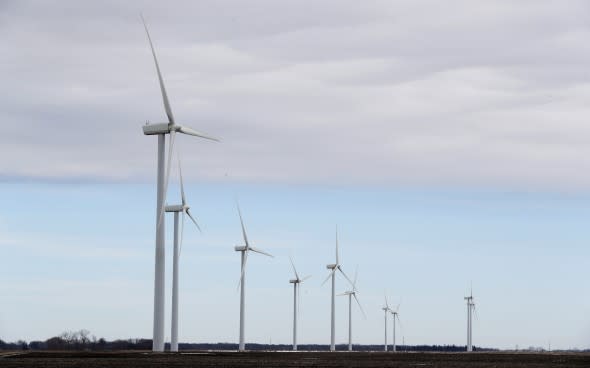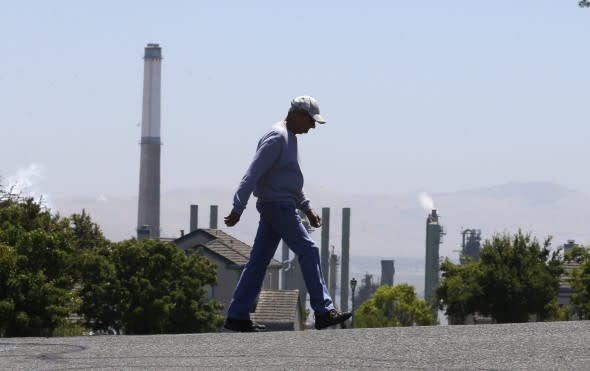Carbon emissions spiked in 2018, research firm finds
United States carbon dioxide (CO2) emissions rose sharply last year. This incline follows three years of decline.
The Rhodium Group, a research firm, released preliminary estimates that showed emissions increased by 3.4 percent in 2018 based on preliminary power generation, natural gas and oil consumption data.
This marks the second largest annual gain in more than two decades, surpassed only by 2010 when the economy bounced back from the Great Recession.
CO2 emissions from fossil fuel combustion in the U.S. peaked in 2007 at just over 6 billion tons. Between then and the end of 2015, emissions fell by 12.1 percent, an average rate of 1.6 percent per year.
The Great Recession played a significant role in the decline along with a significant drop in carbon intensity of U.S. energy supply, primarily due to a switch in power generation from coal to cleaner energy sources, such as natural gas, wind and solar.
Since 2016, the pace of U.S. emissions decline has slowed, from 2.7 percent in 2015 to 1.7 percent in 2016 to 0.8 percent in 2017. This slowdown in progress was noted in the group's annual Taking Stock report from June 2018.
The group noted at the time that this slowdown and a lack of new climate policy action at the federal level would make U.S. emissions fall short of Paris Agreement targets, which would require a reduction in emissions of 26-28 percent below 2005 levels by the year 2025.
President Donald Trump pulled the U.S. out of the Paris Agreement in June 2017, but the Paris Agreement provides emissions goals that policymakers can use as a guideline.
The recent preliminary report by the group states that the U.S. was already off track in meeting Paris Agreement targets, and the gap is even wider headed into 2019.
The group does not expect a repeat of 2018 this coming year. However, the data provides some important insights into the emission reduction challenges facing the U.S.

In this Friday, Feb. 2, 2018 photo, wind turbines stand in a field near Northwood, Iowa. With global temperatures rising, superstorms taking their deadly toll and a year-end deadline to firm up the Paris climate deal, leaders at this year's U.N. General Assembly are feeling a sense of urgency to keep up the momentum on combating climate change. (AP Photo/Charlie Neibergall, file)
While a record number of coal-fired power plants were retired in 2018, natural gas beat out renewables to replace most of this lost generation and also fed most of the growth in electricity demand.
"Natural gas-fired generation increased by 166 million kWh during the first 10 months of the year. That's three times the decline in coal generation and four times the combined growth of wind and solar," the preliminary report reads.
As a result, power sector emissions overall rose by 1.9 percent, according to the report.
The transportation sector held its title as the largest source of U.S. emissions for the third year running. A strong growth in demand for diesel and jet fuel offset a modest decline in gasoline consumption.
"This highlights the challenges in decarbonizing the transportation sector beyond light-duty vehicles," the preliminary report reads.
The buildings and industrial sectors also had significant emissions gains, partially as a result of the unusually cold weather at the start of the year.
Direct emissions from residential and commercial buildings increased by 10 percent in 2018 to their highest level since 2004. This comes from sources including fuel oil, diesel and natural gas combusted on site for heating and cooking.
The increase highlights the limited progress made in developing decarbonization strategies for these sectors.
"While buildings have begun to attract some creative policy thinking, the industrial sector is still almost entirely ignored," the preliminary report reads.

The stacks from the Valero Benicia Refinery are seen as a pedestrian walks in a nearby neighborhood, Wednesday, July 12, 2017, in Benicia, Calif. (AP Photo/Rich Pedroncelli)
The estimates provided in the preliminary report are for energy-related CO2 emissions only, which account for roughly three-quarters of total greenhouse gas (GHG) emissions in the U.S.
Official Environmental Protection Agency (EPA) 2018 inventory numbers for all GHGs will not be available until 2020.
To meet the Paris Agreement target, the U.S. would need to reduce energy-related CO2 emissions by 2.6 percent on average over the next seven years, which is more than twice the pace the U.S. achieved between 2005 and 2017 and significantly faster than any seven-year average in U.S. history.
"It is certainly feasible, but will likely require a fairly significant change in policy in the very near future and/or extremely favorable market and technological conditions," the preliminary report reads.

